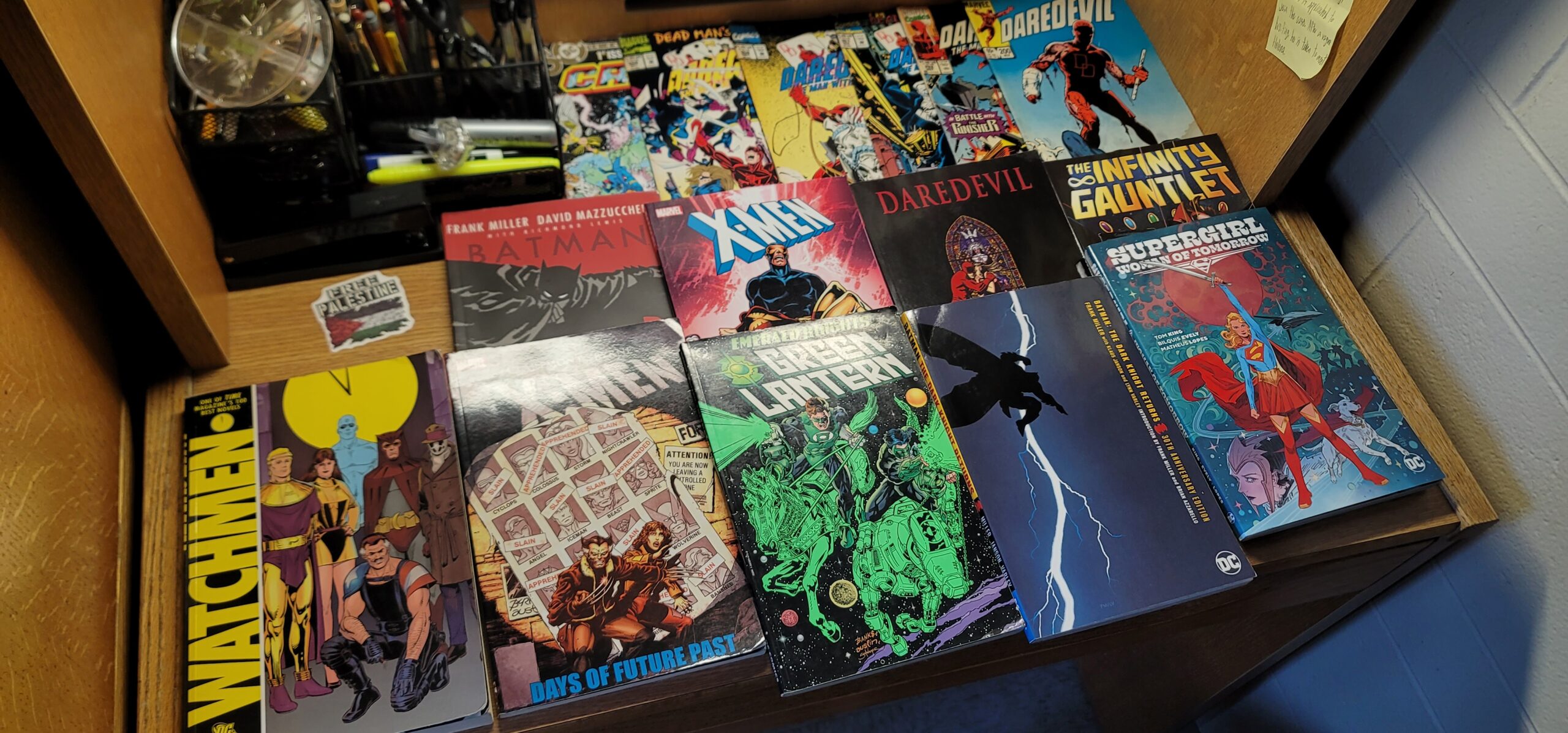John Street’s comic book collection The Xavierite
While many people don’t believe comic books and graphic novels can be high art, I believe they are a valid form of literature that serious readers should familiarize themselves with. Comics have complex characters with narratives as strong as the best examples of literature.
When it comes to the quality of media, the general public writes off anything drawn or animated as lacking maturity and depth. Comic books and animated movies are seen as children’s media even as fantastic works of art disprove this decade after decade.
“Animation is cinema,” Guillermo Del Toro famously said during his Oscars acceptance speech for 2022’s “Pinnochio.” Just as animation is a valid form of cinema, I believe comic books are a valid form of literature.
Merriam-Webster defines literature as “writings in prose or verse, especially writings having excellence of form or expression and expressing ideas of permanent or universal interest.”
By definition, comic books are more than juvenile entertainment. The struggle of heroes like Daredevil and Batman displays “ideas of permanent or universal interest” as they struggle to define and deliver justice.
Daredevil in particular often fails to strike a balance between his Catholic heritage, his belief in the law, his father’s dying wish, and his violent nature. This four-way moral tug-of-war makes Matt Murdock a compelling character and provides a complex psychology unique to literature.
Likewise, The X-Men are well known as an analogy for the civil struggle of many marginalized groups. While the characters may be superpowered, their genetic difference makes them sub-human in the eyes of society.
The X-Men are known for their crime-fighting antics but in stories like “Days Of Future Past” and “God Loves, Man Kills,” the heroes worry about public perception and spend time in courtrooms arguing for their right to exist.
In high school, when I was trying to reconnect with literature, I did so through science fiction (SF) novels like Ray Bradbury’s “Fahrenheit 451” as well as “Batman: Year One” and “The Dark Knight Returns” both written by Frank Miller.
In “The Dark Knight Returns” Miller delivers cutting political commentary and a focused examination of Batman’s character, all while using each panel to immerse the reader in the derelict future of Gotham City.
Here Batman finds himself existing as a boogeyman in the context of a new-age Gotham. As an old man, he fights more than psychotic criminals and emboldened Nazis. He’s fighting the times; an entire generation gone mad and a public that’s become apathetic toward vigilantes.
With these stories, the pictures didn’t take away from the dialogue, but rather they added to the movement of the story. They had power and gravity like nothing in mainstream literature, and the dialogue from them sticks with me to this day.
People believe comics must be simple because they use minimal dialogue to make sense of the images. And while comic books do have much lower word counts than novels, this is not a hindrance, but a challenge for the writer to make each sentence as meaningful as possible.
In 1986, Alan Moore changed the world with his “Watchmen” series, a narrative that pushed the limits of storytelling and maturity in comics, while creating a world rich with turmoil, history, and meaning.
“Watchmen” stands outside of DC’s main continuity to create a cutting commentary on Cold War-era politics, American imperialism, policing in America, male psychology, and comic books themselves. It’s packed full of existential depth and provides a smooth narrative that transitions well between multiple fully realized characters.
The greatest novels I’ve read fail to live up to the heights of “Watchmen” and it stands now, as it did in the 80s, as a testament to the literary power of comic books.
Of course, not all comics are made equal. Sometimes Spider-Man just punches the problems away and swings off into the sunset. But when justice isn’t black and white, that’s when comics stop being vapid, and find the substance that moves the heart, and feeds the mind.
